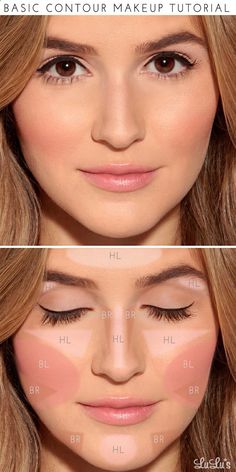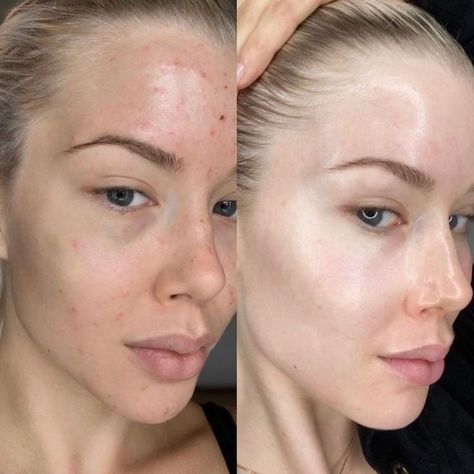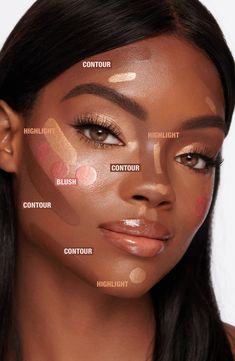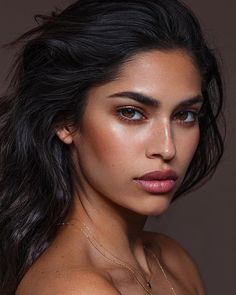Contour Practical
Contouring has become a staple technique in makeup application, offering the ability to sculpt, define, and enhance facial features. However, mastering contouring involves more than just knowing where to apply shadows and highlights; it also requires an understanding of how different contouring techniques can interact with various skin undertones to achieve optimal results. In this note, we will explore the different types of contouring techniques and their implications for different skin undertones.

1. Types of Contouring Techniques:
a. Traditional Contouring: Traditional contouring involves using darker shades to create shadows and lighter shades to highlight certain features. Typically, a matte bronzer or contour powder is used to add depth to the hollows of the cheeks, along the jawline, and on the sides of the nose. This technique works well for most skin tones but may require adjustments based on individual undertones.
b. Cream Contouring: Cream contouring involves using cream-based products to sculpt the face. Cream contours offer a more natural-looking finish and blend seamlessly into the skin. They are particularly suitable for those with dry skin or those looking for a dewy complexion. Cream contours can be applied with a brush, sponge, or fingers, and they provide more control over the intensity of the contour.
c. Liquid Contouring: Liquid contouring involves using liquid-based products, such as foundations or concealers, to contour the face. Liquid contours offer a sheerer and more buildable coverage compared to creams or powders. They are ideal for creating a subtle contour or for those who prefer a lightweight makeup look. Liquid contours can be applied with a brush, sponge, or fingertips, and they blend effortlessly into the skin for a natural finish.

d. Drapping: Drapping is a technique that involves using blush to contour the face. By strategically applying blush to the apples of the cheeks and blending it upward toward the temples, you can create a lifted and sculpted effect. Drapping works well for all skin tones and undertones and adds a pop of color to the complexion.
e. Strobing: Strobing is the opposite of contouring and involves using highlighter to enhance the high points of the face. By applying highlighter to areas where light naturally hits, such as the tops of the cheekbones, brow bones, and cupid’s bow, you can create a luminous and radiant complexion. Strobing works well for those with fair to medium skin tones and can help accentuate their natural glow.
2. Understanding Skin Undertones:
a. Cool Undertones: Cool undertones have hints of blue, pink, or purple and tend to look best in silver jewelry. Those with cool undertones may have fair to deep skin tones, but their complexion has a rosy or pinkish hue. Cool undertones are complemented by shades of pink, berry, and mauve, and they should opt for contour products with cooler undertones, such as taupe or ash brown.
b. Warm Undertones: Warm undertones have hints of yellow, peach, or golden and tend to look best in gold jewelry. Those with warm undertones may have fair to deep skin tones, but their complexion has a golden or olive hue. Warm undertones are complemented by shades of peach, coral, and bronze, and they should opt for contour products with warmer undertones, such as caramel or bronze.
c. Neutral Undertones: Neutral undertones have a balanced mixture of both cool and warm undertones and tend to look good in both silver and gold jewelry. Those with neutral undertones may have fair to deep skin tones, but their complexion has a neutral or beige hue. Neutral undertones are versatile and can pull off a wide range of shades, making them suitable for both cool and warm contour products.

3. Choosing the Right Contouring Technique for Your Skin Undertone:
a. Cool Undertones: For those with cool undertones, it’s best to stick to contour products with cooler undertones, such as taupe or ash brown. Cream or liquid contours work well for cool undertones as they offer a natural finish that complements their rosy complexion. Avoid contour products with warm or orange undertones as they can clash with cool undertones and appear unnatural.
b. Warm Undertones: For those with warm undertones, it’s best to opt for contour products with warmer undertones, such as caramel or bronze. Powder contours work well for warm undertones as they provide a matte finish that complements their golden complexion. Avoid contour products with cool or ashy undertones as they can look muddy or gray on warm undertones.
c. Neutral Undertones: For those with neutral undertones, the choice of contour products is more flexible, as they can pull off both cool and warm shades. Experiment with different contouring techniques, such as cream, liquid, or powder, to find what works best for your skin type and preference. Neutral undertones can play with both cool and warm contour products to create a customized look that enhances their natural beauty.
In conclusion, mastering the art of contouring involves understanding the different contouring techniques and how they interact with various skin undertones. By choosing the right contouring technique and products for your skin undertone, you can achieve a sculpted and flawless complexion that enhances your natural beauty. Experiment with different contouring techniques and products to find what works best for your skin type, undertone, and preference.


